This article was co-authored by Ray Spragley, DVM. Dr. Ray Spragley is a Doctor of Veterinary Medicine and the Owner/Founder of Zen Dog Veterinary Care PLLC in New York. With experience in multiple institutions and private practices, Dr. Spragley’s specializations and interests include non-surgical management of cranial cruciate ligament tears, Intervertebral Disk Disease(IVDD), and pain management in osteoarthritis. Dr. Spragley holds a BS in Biology from SUNY Albany and has a Doctor of Veterinary Medicine degree (DVM) from Ross University School of Veterinary Medicine. He is also a Certified Canine Rehabilitation Therapist (CCRT) through the Canine Rehab Institute as well as a Certified Veterinary Acupuncturist (CVA) through Chi University.
There are 12 references cited in this article, which can be found at the bottom of the page.
wikiHow marks an article as reader-approved once it receives enough positive feedback. This article received 31 testimonials and 92% of readers who voted found it helpful, earning it our reader-approved status.
This article has been viewed 961,593 times.
The majority of dog warts are benign and do not necessarily require removal. Unnecessary removal could actually put undue stress on your dog, and could even trigger another outbreak of warts in the near future. If you do decide to remove your dog’s warts, however, there are a few holistic remedies you can try on your own before going to the veterinarian and paying for professional procedures.
Steps
Assessing the Wart
-
1Assess whether a growth is a wart. Dog warts, or sebaceous gland cysts, are actually a type of benign skin mass that appears in dogs as they age, similar to the way that moles appear in humans. Other growths can also occur on a dog’s body. Some examples include skin tags, mast cell tumors, histiocytomas, hair follicle tumors, collagenous nevi and fibromas.[1]
- If you are ever in doubt as to whether the growth you are seeing on your dog is a simple wart or some other disease consult your veterinarian. She or he can draw some of the cells out of the growth and examine it under the microscope to give you an accurate diagnosis.[2]
-
2Examine the appearance of the wart. True warts are caused by the papilloma virus and are usually found in puppies or older dogs with an imbalance in their immune system. These warts look like cauliflower stalks and typically appear along the nose, lips or gums. The warts usually disappear after a few months as the immune system develops, but they can be contagious and make it difficult for your dog to swallow or breathe.
- Common, benign warts are flesh-colored and small. They tend to look like tiny mushrooms.
- If a benign wart grows or looks inflamed, you may need to remove it. You cannot always tell by looking at it if it is a cancerous tumor or not. Many times cancerous warts are black, quick-growing, and inflamed. They generally form around the eyelids or lips and should be removed as soon as possible.
Advertisement -
3Chart the growth of the wart. As long as a wart does not increase in size or change shape, you probably do not need to remove it. You should, however, make your vet aware of any warts your dog develops so that he or she can keep track of them as well.
- Many warts disappear on their own, but even those that persist generally remain harmless.
-
4Consider whether or not the wart poses a problem. You can remove a wart merely for cosmetic purposes, but it is generally not recommended to perform surgery for that reason alone. If, however, a benign wart keeps getting snagged, causes your dog to itch and scratch, or otherwise makes your dog uncomfortable, you may opt to have it removed.
- Your veterinarian can also give you guidance as to whether the wart needs removal. Warts that the dog can irritate by scratching or rubbing or that rubs against a collar are best removed to avoid repeated infections and inflammation. At times itching can also signal that the wart is cancerous and should be removed.
Treating a Wart Holistically
-
1Chart the progress of any treatment you choose. On the first day before treatment chart the wart. Photograph the existing wart (or mole) to establish a baseline. Use a metric ruler to measure the wart in millimeters. Date the photograph, circle day one of treatment on the calendar, and write down the measurements.
- As long as you are positive that your dog only has a benign (non-cancerous) wart you can try some of these holistic treatments. Remember that there is no scientific evidence supporting the efficacy of any of these methods. So if the wart turns black, grows quickly or becomes inflamed, bring your pet to a licensed veterinarian for medical treatment.
-
2Try Thuja. Thuja is a homeopathic treatment made from a type of tree, and it is considered safe for most dogs. It is available in both pellet and liquid forms, and should be given to your dog orally.[3] [4]
- You only need to give your dog a single dose. If you do not see any improvement after the first two weeks, however, you may give your dog a second dose.
- Thuja can cause abortions so do not use in a pregnant animal.
-
3Psorinoheel is a supplement that includes psorinum and sulfur, in addition to Thuja, which all act as antiviral agents.[5]
-
4Boost your dog's immune system with vitamin support. The wart may be a symptom of a weakened immune system, so it may disappear if you address the problems with your dog's immune system.[6] The supplement Immunosupport contains several immune boosting ingredients including arabinogalactans, lutein, and shitake mushrooms.
-
5Give your dog L-Lysine. This is available in pill form. Give 500 mg twice a day to the affected dog until warts disappear.[7]
-
6Apply vitamin E to the wart. Use a sterilized needle or knife to puncture a standard vitamin E capsule. Apply the vitamin directly to the wart using clean fingers or a cotton swab. Repeat this procedure three to four times a day for two to three weeks until you see improvement.
-
7Rub castor oil over the wart. Standard castor oil, found in most drug stores, can soften dog warts and greatly reduce irritation, which will help prevent your dog from scratching the wart open.[8] [9] Use a clean finger or cotton swab to apply to oil directly to the wart. Apply this treatment once every day or two, or as necessary to reduce irritation until the wart vanishes.
-
8Try apple cider vinegar (ACV). This process is painless at first, however, towards the middle of the treatment cycle the subject will experience mild tingling to stinging as the acid in the apple cider vinegar eliminates the growth. Do NOT use this method on warts around the eye or genital area.
- Pour a small amount of ACV into a cup.
- Smear petroleum jelly on the skin around the wart to protect unaffected skin.
- Have the dog sit or lay down so the wart is facing up. Use an eyedropper to apply two to three drops of apple cider vinegar to the top of the wart and allow to soak in. Any excess that runs off the wart can be wiped up with a clean paper towel.
- Keep the dog busy with a toy or petting to allow the ACV to soak in for up to 10 minutes; then let the dog go about its business.
- Apply ACV to the wart three to four times a day. As the treatment continues it may start to sting as the top of the wart sheds off but continue to treat 3-4 times daily until the “root” is reached. This will eventually dry up and fall off.
- When the root of the growth dries up there will be a red spot, or blister on the skin. Clean the spot or blister carefully with clean warm water on a clean wash cloth then apply coconut oil to the area once a day until the spot heal. Coconut oil has anti-fungal properties and will promote healing and regeneration of healthy skin cells.[10]
Removing a Wart Medically
-
1Give your dog azithromycin. This is a type of antibiotic used to treat warts in humans and has also proven to be an effective treatment for warts in dogs.[11] It will need to be prescribed by a veterinarian. Treatment is an oral dose (calculated based upon your dog’s weight) once a day for up to 10 days.
-
2Consider a subcutaneous interferon treatment for warts caused by viral infections. This is an antiviral treatment that can be prescribed by your vet, which is available for warts unresponsive to other treatments or for severe wart growth.[12] Your veterinarian will inject the treatment into your dog multiple times a week, or he or she may demonstrate how to inject the drug and instruct you to do so at home.
- These treatments can continue up to eight weeks.
- While you can avoid surgery and the associated risks, this treatment can cause a number of side effects, including fever and loss of appetite.
-
3Ask your vet to perform electrocautery. When performing electrocautery, also called electrosurgery, the veterinarian uses a small tool that allows him or her to apply a small, concentrated amount of electricity to the wart. This electricity burns away the contaminated tissue, thereby removing the wart.
- The surgery is usually performed under local anesthesia, making it a good option if you worry about the risks involved in knocking your dog out with general anesthesia.
-
4Discuss the possibility of cryosurgery with your veterinarian. During cryosurgery, the vet will use a specialized tool to freeze the wart. Freezing destroys the diseased tissue, shrinking the wart significantly and, in many cases, causing it to disappear entirely. [13]
- Like electrocautery, cryosurgery is performed under local anesthesia, so your dog will not need to be completely knocked out.
-
5Opt for excision. An excision is the most traditional treatment for warts, but your veterinarian may need to put your dog under general anesthesia to perform it. During a traditional excision, the vet simply cuts the wart and contaminated tissue away using a medical scalpel.
- Your vet may opt to wait to excise warts until your dog is going under general anesthesia for another reason, since putting a dog under is an extreme measure to put a dog through just to remove warts.[14]
-
6Try laser ablation. Opt for this treatment if your dog has persistent warts that do not respond to other treatments. Your dog will need to go under general anesthesia, but laser ablation attacks warts at the root, and often proves itself to be the most powerful treatment against resistant or recurrent warts.
Our Most Loved Articles & Quizzes
Expert Q&A
-
QuestionHow long does it take for a dog wart to disappear?
 Ray Spragley, DVMDr. Ray Spragley is a Doctor of Veterinary Medicine and the Owner/Founder of Zen Dog Veterinary Care PLLC in New York. With experience in multiple institutions and private practices, Dr. Spragley’s specializations and interests include non-surgical management of cranial cruciate ligament tears, Intervertebral Disk Disease(IVDD), and pain management in osteoarthritis. Dr. Spragley holds a BS in Biology from SUNY Albany and has a Doctor of Veterinary Medicine degree (DVM) from Ross University School of Veterinary Medicine. He is also a Certified Canine Rehabilitation Therapist (CCRT) through the Canine Rehab Institute as well as a Certified Veterinary Acupuncturist (CVA) through Chi University.
Ray Spragley, DVMDr. Ray Spragley is a Doctor of Veterinary Medicine and the Owner/Founder of Zen Dog Veterinary Care PLLC in New York. With experience in multiple institutions and private practices, Dr. Spragley’s specializations and interests include non-surgical management of cranial cruciate ligament tears, Intervertebral Disk Disease(IVDD), and pain management in osteoarthritis. Dr. Spragley holds a BS in Biology from SUNY Albany and has a Doctor of Veterinary Medicine degree (DVM) from Ross University School of Veterinary Medicine. He is also a Certified Canine Rehabilitation Therapist (CCRT) through the Canine Rehab Institute as well as a Certified Veterinary Acupuncturist (CVA) through Chi University.
Veterinarian On many occasions, your dog's immune system will naturally get rid of the wart over a few months.
On many occasions, your dog's immune system will naturally get rid of the wart over a few months. -
QuestionHow do you naturally treat warts on dogs?
 Ray Spragley, DVMDr. Ray Spragley is a Doctor of Veterinary Medicine and the Owner/Founder of Zen Dog Veterinary Care PLLC in New York. With experience in multiple institutions and private practices, Dr. Spragley’s specializations and interests include non-surgical management of cranial cruciate ligament tears, Intervertebral Disk Disease(IVDD), and pain management in osteoarthritis. Dr. Spragley holds a BS in Biology from SUNY Albany and has a Doctor of Veterinary Medicine degree (DVM) from Ross University School of Veterinary Medicine. He is also a Certified Canine Rehabilitation Therapist (CCRT) through the Canine Rehab Institute as well as a Certified Veterinary Acupuncturist (CVA) through Chi University.
Ray Spragley, DVMDr. Ray Spragley is a Doctor of Veterinary Medicine and the Owner/Founder of Zen Dog Veterinary Care PLLC in New York. With experience in multiple institutions and private practices, Dr. Spragley’s specializations and interests include non-surgical management of cranial cruciate ligament tears, Intervertebral Disk Disease(IVDD), and pain management in osteoarthritis. Dr. Spragley holds a BS in Biology from SUNY Albany and has a Doctor of Veterinary Medicine degree (DVM) from Ross University School of Veterinary Medicine. He is also a Certified Canine Rehabilitation Therapist (CCRT) through the Canine Rehab Institute as well as a Certified Veterinary Acupuncturist (CVA) through Chi University.
Veterinarian Since warts are a form of papillomavirus, try using supplements to boost your dog's immune system, which may help eliminate these blemishes. Some of these products include vitamin E, Thuja, antioxidant blends, topical apple cider vinegar, and topical castor oil. Just keep in mind that there aren't many studies on how effective these supplements are.
Since warts are a form of papillomavirus, try using supplements to boost your dog's immune system, which may help eliminate these blemishes. Some of these products include vitamin E, Thuja, antioxidant blends, topical apple cider vinegar, and topical castor oil. Just keep in mind that there aren't many studies on how effective these supplements are.
Warnings
- If your dog has warts caused by a virus, you should keep it away from other dogs. This is especially true if the warts develop in the mouth. Make sure that your dog has its own water bowl and does not share it with other dogs. Also keep your dog out of dog parks or other dog-heavy locations until the wart clears up.⧼thumbs_response⧽
References
- ↑ http://www.merckvetmanual.com/pethealth/dog_disorders_and_diseases/skin_disorders_of_dogs/tumors_of_the_skin_in_dogs.html
- ↑ http://pets.webmd.com/dogs/dog-lumps-bumps-skin
- ↑ http://dailymed.nlm.nih.gov/dailymed/fda/fdaDrugXsl.cfm?setid=5c31cacd-c3e1-4241-beca-29f1b28a6fd1&type=display
- ↑ Ray Spragley, DVM. Veterinarian. Expert Interview. 29 June 2021.
- ↑ http://www.biopathica.co.uk/documents/vetguidefinal.pdf
- ↑ Ray Spragley, DVM. Veterinarian. Expert Interview. 29 June 2021.
- ↑ Blackwell's Five-Minute Veterinary Consult: Canine and Feline. L. P. Tilley and F. W. K. Smith, Jr.. John Wiley & Sons. 2011
- ↑ http://www.organic-pet-digest.com/dog-warts.html
- ↑ Ray Spragley, DVM. Veterinarian. Expert Interview. 29 June 2021.
- ↑ http://www.dogsnaturallymagazine.com/the-health-benefits-of-coconut-oil/
- ↑ Azithromycin therapy of papillomatosis in dogs: a prospective, randomized, double-blinded, placebo-controlled clinical trial. Yağci BB1, Ural K, Ocal N, Haydardedeoğlu AE. 2008. Vet. Dermatology. Aug;19(4):194-8. doi: 10.1111/j.1365-3164.2008.00674.x
- ↑ http://www.revmedvet.com/2015/RMV166_25_29.pdf
- ↑ http://www.vcahospitals.com/main/pet-health-information/article/animal-health/cryosurgery-in-dogs/952
- ↑ https://www.vetinfo.com/surgical-removal-of-dog-warts.html
About This Article
To remove warts on dogs, try Thuja, a homeopathic treatment made from a type of tree. After giving your dog one oral dose of Thuja, wait 2 weeks to see if there’s any improvement. If not, you may try a second dose. If you suspect the wart is a symptom of a weak immune system, try the supplement Immunosupport to boost your dog’s vitamin intake and help the wart heal. While treating the wart, if your dog appears to be irritated by it, apply castor oil directly to the wart once every day or two to soften it. For more information from our Veterinarian co-author about how to get a wart surgically removed, keep reading!
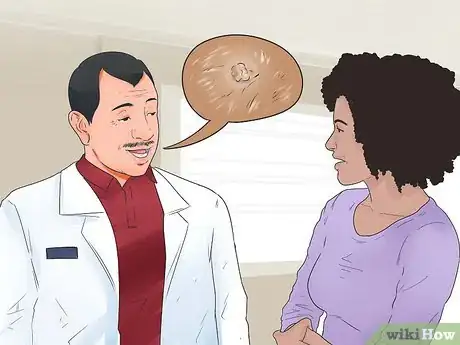
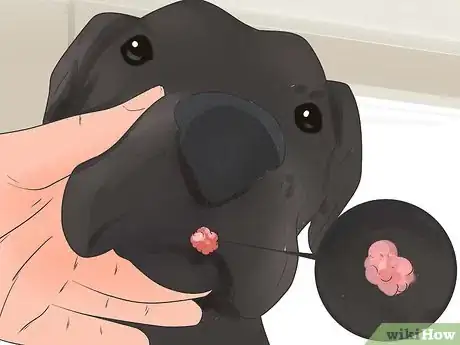
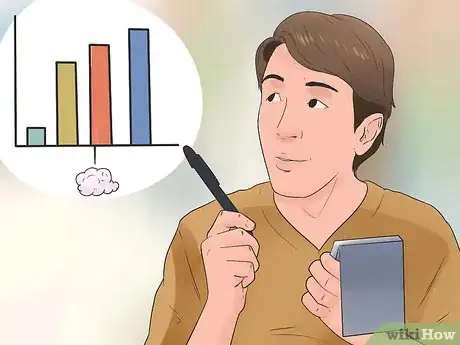
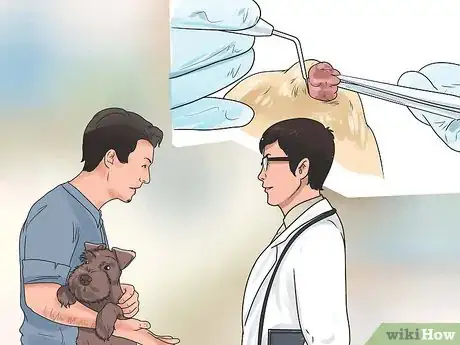
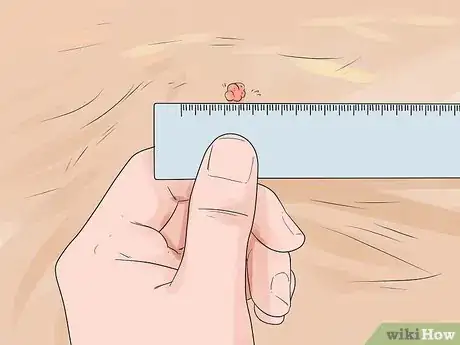
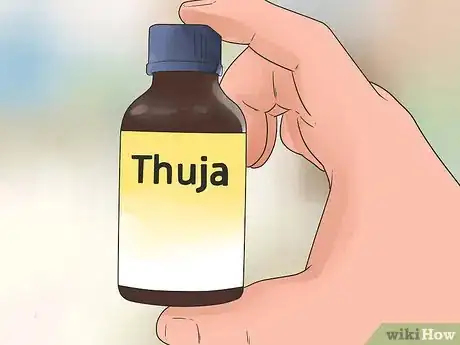

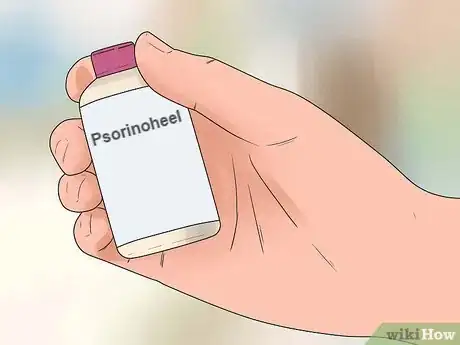
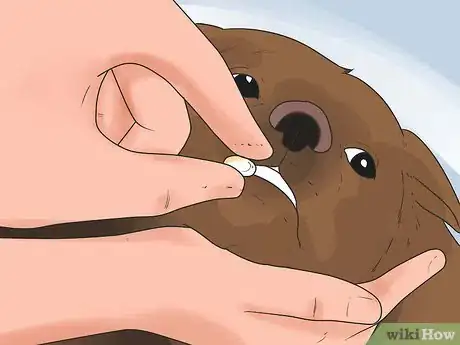
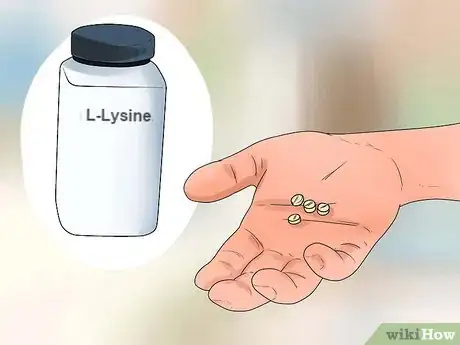
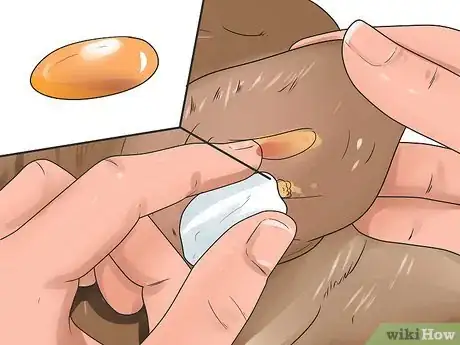
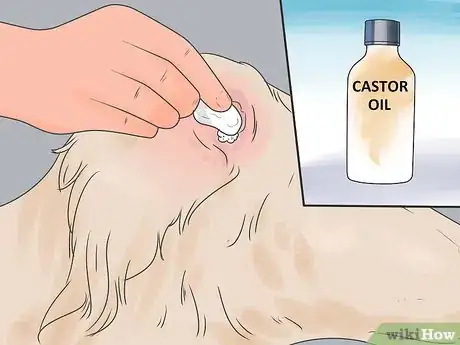
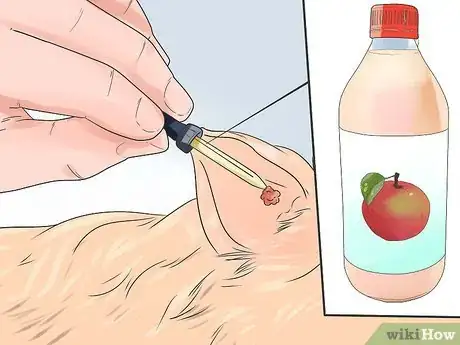
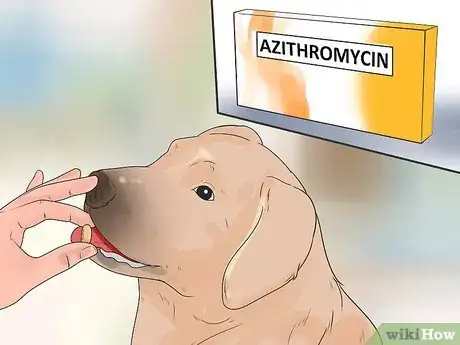
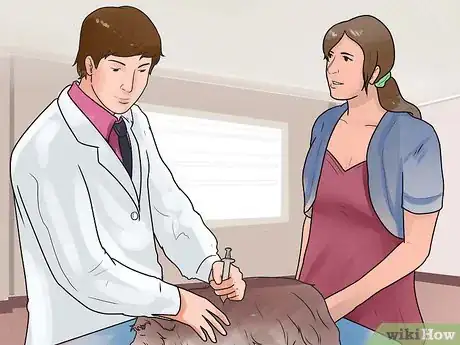
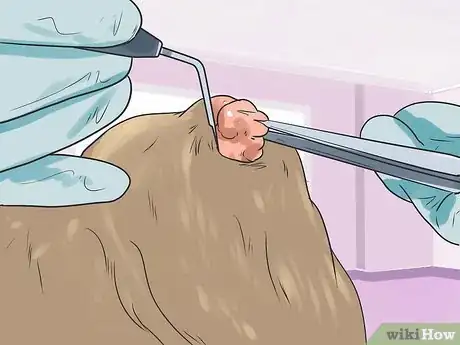
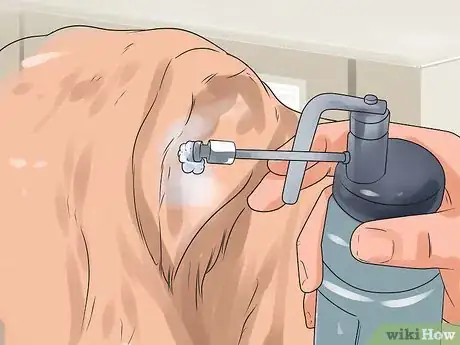
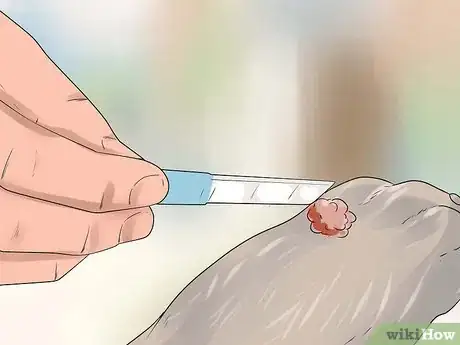
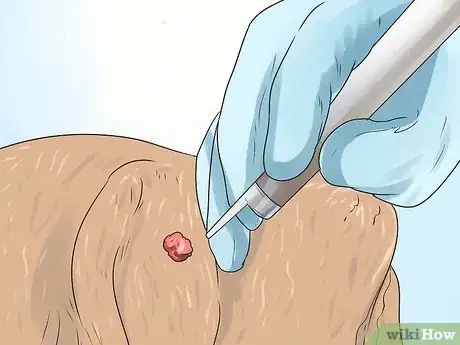







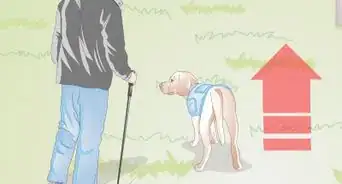
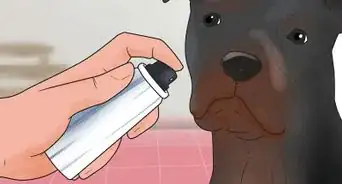
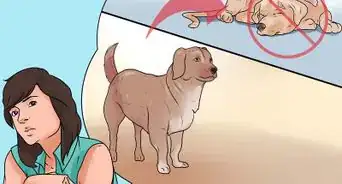

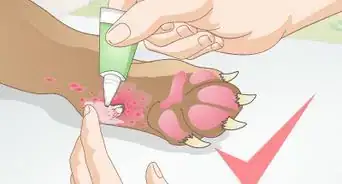
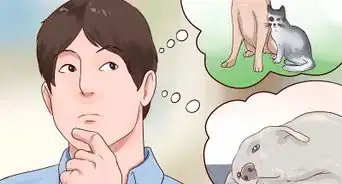
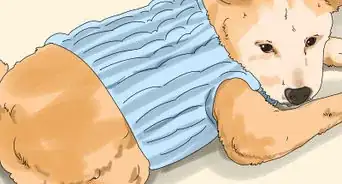
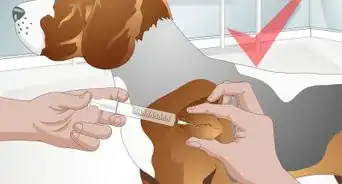
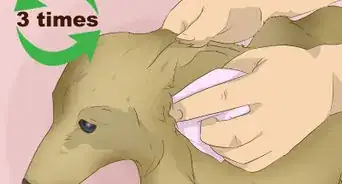
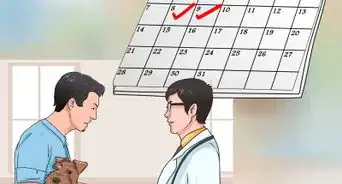
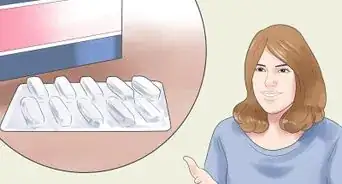
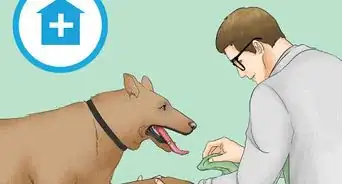
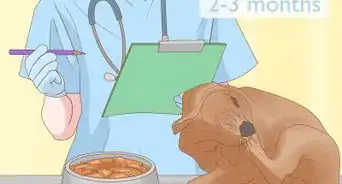










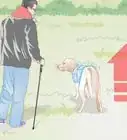
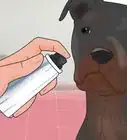
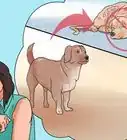





























Medical Disclaimer
The content of this article is not intended to be a substitute for professional medical advice, examination, diagnosis, or treatment. You should always contact your doctor or other qualified healthcare professional before starting, changing, or stopping any kind of health treatment.
Read More...